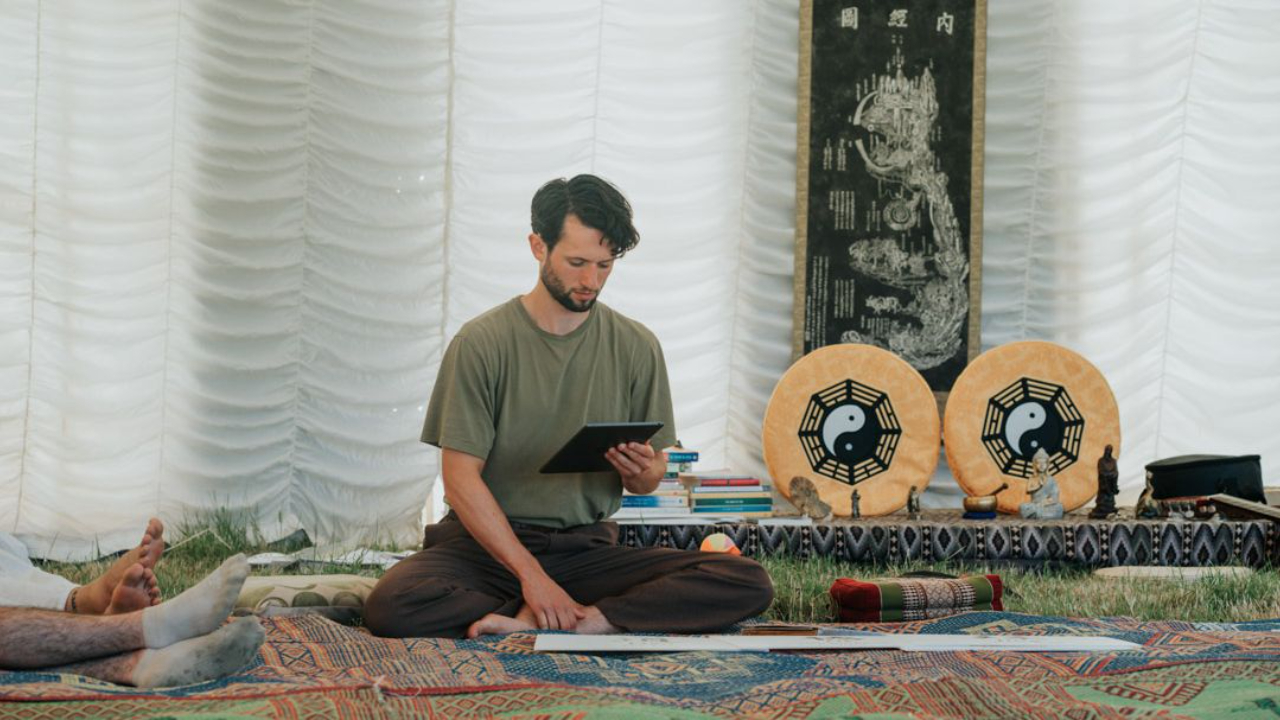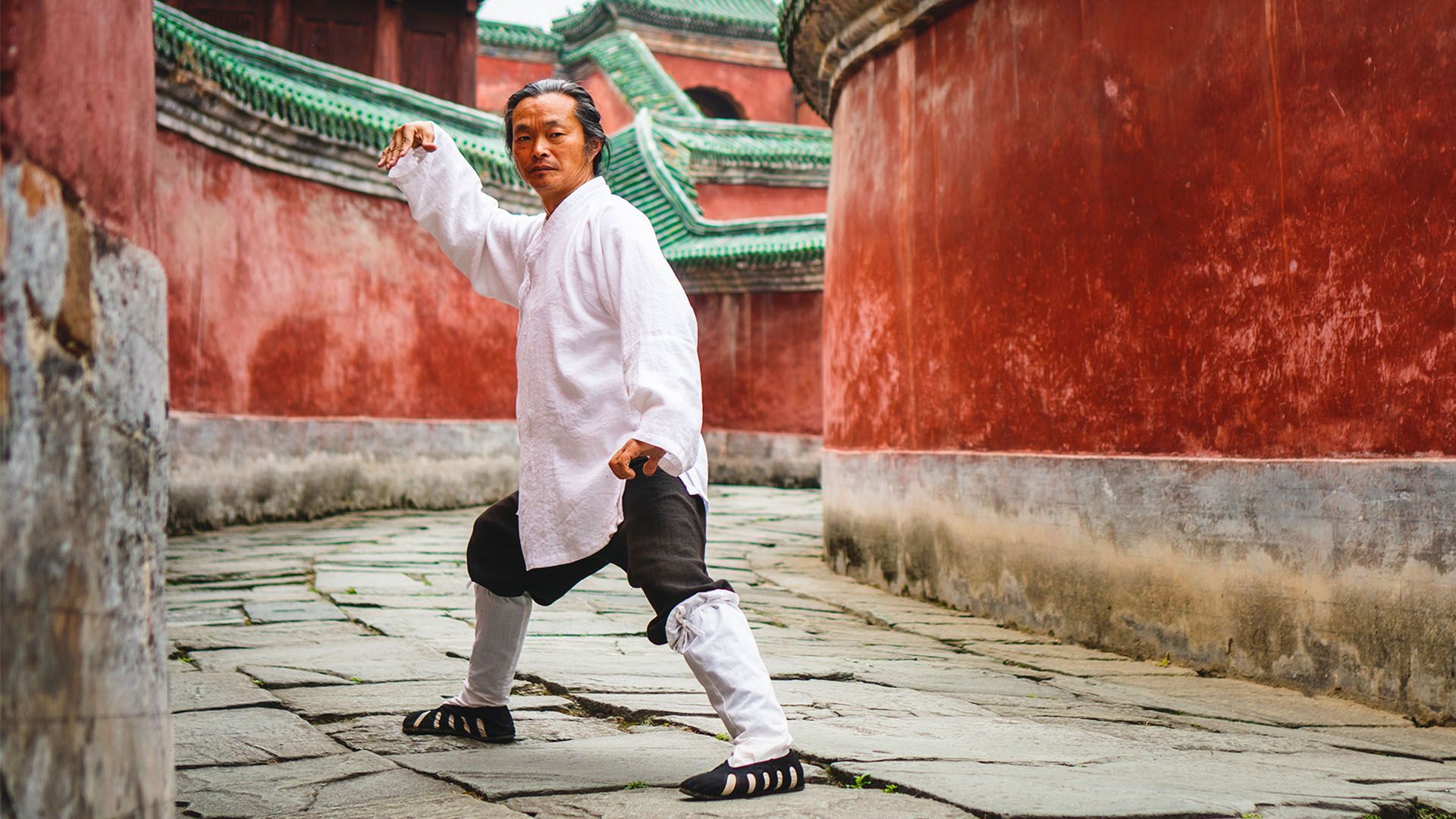18 Buddha Hands Qigong: A Complete Overview
Dec 13, 2023
18 Buddha Hands Qigong is an ancient, profound practice that harmonizes body, mind, and spirit. Rooted in Buddhist philosophy, this traditional Chinese Qigong form combines flowing movements with meditative breathing. It enhances Qi, the life energy in the body. Each of the 18 movements symbolizes natural and mythical elements, promoting balance, strength, and inner harmony. This practice improves physical flexibility and nurtures mental calmness. As a holistic wellness approach, it is suitable for all ages and fitness levels. 18 Buddha Hands Qigong is a unique journey into traditional healing practices.
Table of Contents
Historical Background of 18 Buddha Hands Qigong
Origins of 18 Buddha Hands Qigong
The origins of 18 Buddha Hands Qigong trace back to ancient China, deeply rooted in Buddhist traditions and Chinese medicine. This form of Qigong was initially developed as a series of movements and breathing techniques designed for monks to maintain physical and mental well-being, essential for their long meditative practices. Over time, these exercises evolved, intertwining spiritual, health, and martial arts aspects, reflecting the holistic view of the human body in traditional Chinese culture.
Evolution over the Centuries
Throughout the centuries, 18 Buddha Hands Qigong has undergone significant transformation. Initially preserved within monastic communities, it gradually spread to the general populace, adapting to meet the diverse needs of its practitioners. Each era saw the integration of contemporary medical knowledge and philosophical insights, enhancing its efficacy and applicability. This evolution has resulted in the form practiced today, which balances traditional techniques with a modern understanding of physical health and mental well-being.
Importance in Modern Wellness Practices

In contemporary times, 18 Buddha Hands Qigong has gained prominence as a comprehensive wellness practice. Its significance in modern health and wellness includes:
- Mind-Body Harmony: It promotes a unique blend of physical activity and mental tranquility, addressing the growing need for holistic health solutions in a fast-paced world.
- Stress Reduction: Regular practice is known to significantly reduce stress and anxiety, appealing to a wide audience in today's high-stress society.
- Flexibility and Balance: The gentle movements improve physical flexibility and balance, which are key aspects of physical fitness.
- Accessible Wellness: It offers an accessible form of exercise and meditation, requiring no special equipment and being adaptable to various fitness levels and age groups.
- Integrative Health Approach: 18 Buddha Hands Qigong complements modern medical practices, offering a non-invasive and natural method to enhance overall health and well-being.
This relevance has led to its incorporation into various health and wellness programs worldwide, reflecting a growing recognition of the value of traditional practices in contemporary health regimes.
Key Principles of 18 Buddha Hands Qigong
The practice of 18 Buddha Hands Qigong is grounded in several core principles that harmonize the body, mind, and spirit. These principles are not just techniques but also philosophies that guide the practice.
- Mindfulness: Central to the 18 Buddha Hands Qigong, mindfulness involves being fully present and aware during the practice. It encourages a deep connection with one's body and the surrounding environment, enhancing the overall experience.
- Harmony of Movement and Breath: This principle stresses the synchronization of movement and breath. Each gesture is performed with a corresponding breathing pattern, creating a seamless energy flow throughout the body.
- Balance and Flow: Balance is not just physical but also energetic. The practice aims to balance the yin and yang energies within, promoting a state of equilibrium. Flow, in this context, refers to the smooth and continuous movements that characterize the form.
- Energy Cultivation (Qi): The practice is fundamentally about cultivating and balancing Qi, the life force. Through movements and breathing techniques, practitioners learn to sense, harness, and direct this vital energy.
- Intention and Focus: Setting a clear intention and maintaining focus are essential. This mental discipline helps channel energy more effectively and deepens the meditative aspect of the practice.
- Relaxation and Ease: Despite the physical movements, a key principle of 18 Buddha Hands Qigong is to perform each motion with relaxation and ease. This approach helps reduce tension and enhance the flow of Qi.
These principles work together, creating a holistic practice that benefits physical health, mental clarity, and spiritual growth. Practitioners often find that these principles extend beyond their Qigong practice, influencing their approach to daily life.
The 18 Movements Buddha Hands Qigong
- The Saint Hermit Greets: In this form, practitioners relax their arms and feet together and simulate holding a tripod. They then bend at the waist, lean back, and protrude their stomach.
- The Great Prince Raises a Tripod: This movement involves hand motions resembling dividing water, an eagle spreading wings, lifting a club, and presenting the moon. It's a full-body engagement that mimics natural and symbolic gestures.
- To Stick Flowers to the Left and Right: Starting with hands at the waist, this movement progresses to showing a path and raising arms overhead. It concludes with a unique motion that resembles hooking the ribs from below.
- Intertwined Roots of a Dry Tree: This form begins with a posture akin to a rhinoceros gazing at the moon. Subsequent movements include turning in a nest, fishing the moon from the sea, and bringing palms forward.
- The Devil Measures Sea Depth: Participants raise a tripod with one arm and bend to touch the ground. The form also includes storing a blow behind the back and mimicking scooping water.
- To Fling the Window Open and Let Light In: The form starts with turning to both sides and simulates pushing a mountain. It ends with dragging a net using leg force and putting palms towards the wind.
- Wei Tuo Presents a Club: In this sequence, arms are brought to the sides, imitating Er Lang carrying a mountain. It ends in a rider’s stance after mimicking the lifting of a tripod.
- The Old Monk is Deep in Meditation: This sequence includes taming the dragon and tiger, stretching the groin, and movements like swallows. It concludes with a posture resembling mounting a horse.
- The Iron Bull Ploughs the Field: This form consists of movements like counteracting forces and dividing forces among muscles. It ends with clenching fists for force accumulation and joining palms in front.
- The Green Dragon Wags its Tail: This starts with resting on the heel and pushing with an arm. The form progresses to swinging a whip and ends with a defensive wide stance and simultaneous repelling and holding actions.
- To Mount the Horse from the Left and Right: This involves raising arms and balancing on one leg. The movement resembles propping up an iron gate with the knee.
- The Swallow Drinks Water: This form includes replacing beams and columns, catching a cicada, and making a turn with arms together. It concludes with the golden cock standing on one leg.
- Tiger Runs Away from a Deity: Positions in this form involve running the wind along the sides and hanging in emptiness. It concludes with a dead snake lying on the ground and a seal on the breast.
- Chen Tuan in an Awkward Situation: This involves planting flowers at the bottom of a well and drilling a fist with legs widely set. It concludes with Liu Quan raising a golden pumpkin and applying force as if swimming.
- Farther and Son Ask to Perform the Rite: This form includes turning and hitting at mid-level, holding a broadsword, and making a push with arms. The sequence ends with the Great Prince bending his bow.
- The Carp Thrashes and Arches It's Back: Starting with the Yellow Dragon turning over, this form progresses to bending the bow and drawing the string. It represents the vigorous movements of a carp.
- Zhang Liao presents a Robe: This involves raising a knee to embrace the moon and resting with force while bending a knee. It concludes with hurling a heavy double blow and pulling up reins on horseback.
- Hanging a Jug on a Golden Hook: The final form includes looking at the meridians' intersection point and bending the torso to preserve the kidneys. It ends with the jade pole supporting the sky.
Each of these forms and positions in Buddha Hands Qigong has its own unique essence and contributes to the holistic benefits of the practice.
Conclusion:
The 18 Buddha Hands Qigong stands as a testament to the enduring wisdom of ancient wellness practices. Its rich tapestry of movements not only fosters physical health but also nurtures a deeper connection with the inner self, promoting a harmonious balance of mind, body, and spirit. As you reflect on this timeless practice, its teachings extend beyond mere physical exercise to encompass a more profound understanding of life energy. Consider how integrating such a practice could transform your journey toward wellness and inner peace. What areas of your life could benefit from the tranquil balance that 18 Buddha Hands Qigong offers?
FAQs
1. When is the best time to practice Qigong?
Early morning or evening are ideal times.
2. Can Qigong help with specific health issues?
While it is not a cure, it can complement other treatments.
3. Do I need special equipment for Qigong?
No special equipment is needed, just comfortable clothing.
4. How long does it take to see benefits from Qigong?
Benefits can be noticed with consistent practice over weeks or months.
5. Can children practice Qigong?
Yes, it is suitable for all ages.







